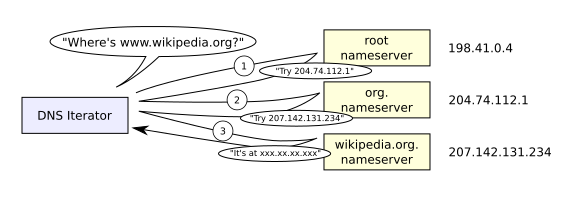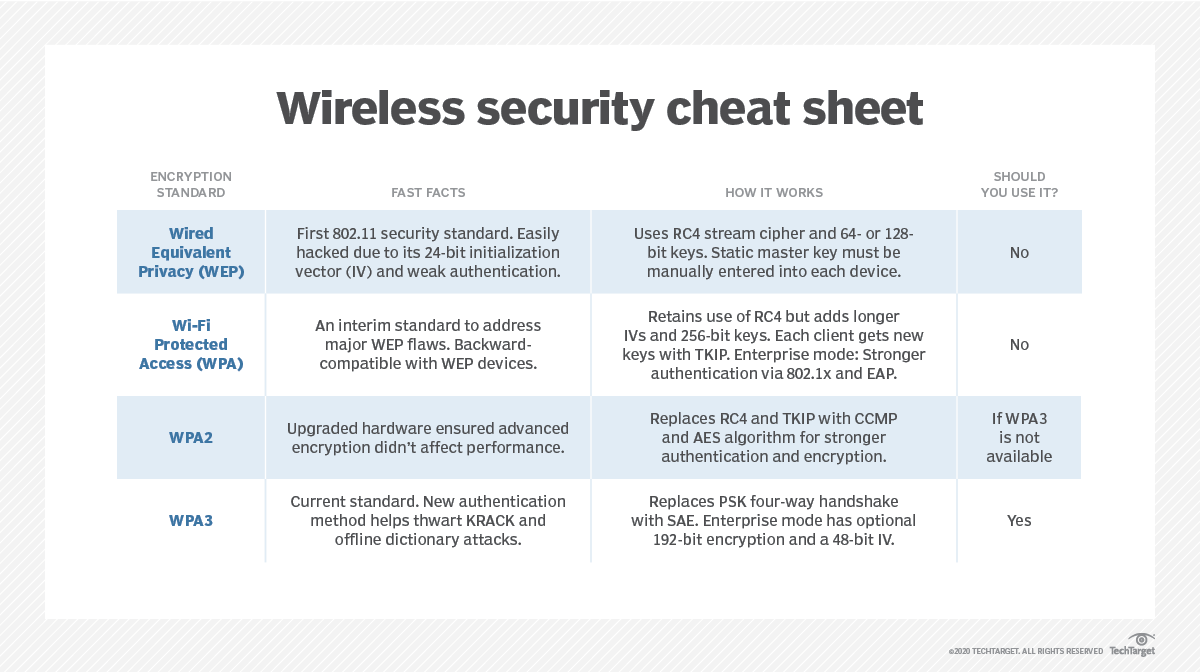WLAN Channel
2.4 GHz
- 802.11b, 802.11g, 802.11n, 802.11ax
- To prevent the overlapping between channels, in most of the countries, 3 channels will be used
- channel 1, 6, 11

- Relative lower speed
- Better penetration on different materials, longer distance and more stable
- Many other technologies are using 2.4GHz also, e.g. bluebooth, Microwave oven, wireless microphones
- Interference would be a problem
5 GHz
- 802.11a, 802.11n, 802.11ac, 802.11ax
- Much more channels and provide more choice on the bandwidth, 20, 40, 80, 160Mhz
- The wider bandwidth, the faster data transmission rate

- Providing a faster transmission rate
- But relative shorter distance and weaker penetration on obstacle
IEEE standard
802.11a
- 5 GHz, 20 MHz
- 54 Mbit/s
802.11b
- 2.4 GHz, 20 MHz
- 1, 2, 5.5, 11 Mb/s
802.11g
- 2.4 GHz, 20 MHz
- 6, 9, 12, 18, 24, 36, 48, 54 Mbit/s
- Compatible to 802.11b
802.11n
- aka Wi-Fi 4
- 2.4/5 GHz, 20/40 MHz
- Support 4x4 MIMO
- 20 MHz: up to 288.8 Mb/s
- 40 MHz: up to 600 Mb/s
- Compatible to 802.11a/b/g
802.11ac
- aka Wi-Fi 5
- Wave 1, Wave 2, IEEE
- 5 GHz, 20/40/80 MHz, 3x3 MIMO
- Wave 2: MU-MIMO, 80+80/160 MHz, 3-4 MIMO
- 20 MHz: up to 346.8 Mb/s
- 40 MHz: up to 800 Mb/s
- 80 MHz: up to 1733.2 Mb/s
- 160 MHz: up to 3466.8 Mb/s
- IEEE: 8x8 MIMO
- 160 Mhz: 6.9 Gb/s
802.11ax
- aka Wi-FI 6
- 2.4 and 5 GHz, incorporate 1 - 7 GHz
- Next generation
- 160 MHz: 1201 Mb/s (Single spatial stream)
- Demo product up to 11 Gbit/s
Signal Strength
- in terms of mW
- RSSI (dBm)
- Noise floor (dBm)
- RSSI - Noise floor -> SNR (Signal to Noise Ratio)
RSSI (Received Signal Strength Indicator)
- Non-linear indication

- The higher the RSSI, the stronger the signal received
SNR (Signal to Noise Ratio)
- The higher the SNR, the more signal than noise
Wi-Fi authentication
WEP (Wired Equivalent Privacy)
- PSK (Pre Shared key) for all clients
- 40 bit -> 104-bit key (US gov restrictions)
- Combined with a 24-bit initialization vector
- Easy to crack
WAP (Wi-Fi Protected Access)
- Interim standard
- Same alogrithm to WEP but using TKIP (Temporal Key Integrity Protocol)
- 256 bits keys, per-packet key mixing, unique key for each packet
- automatic broadcast of updated keys
- message integrity check
- Larger IV size (48 bits)
- Personal mode, PSK
- Enterprise mode, EAP (Extensible Authentication Protocol) with 802.1x
- Enterprise mode required an authenticatioin server
WAP2 (Wi-Fi Protected Access II)
- AES (Advanced Encryption Standard) and Counter Mode with (Cipher Block Chaining Message Authentication Code Protocol)
- Support TKIP as a fallback
- Seamless roaming, allowing client to move between AP on same network without having reauthtication
- Use of Pairwise Master Key caching or preauthentication
- Personal mode, PSK
- Enterprise mode, EAP with 802.1x
802.1x
- Authenticator and Authentication Server
- Only allow client to connect the network after authenticate by Authenticator
Major Wi-FI solution vendor
Aruba
- AirWave for management
- Better on managing multiple different security profiles across different location, Clearpass
- Has decent switches which can use to control different AP
- More focus on the security issue
- Mor enterprise support capailities
Ruckus
- Unleashed & Unleashed Multi-Site Manager (UMM)
- Easy to configure and monitor
- Cheaper than Aruba
- Only focus on wireless
- Focus on the user interface, the ease to control their product
- ZoneDirectors do not have integrated RADIUS servers
Cisco
- Complicated to configure than Ruckus
- More to cover an area
- Better migrate with the wired components
Thin AP vs Fat AP
Thin AP
- Transmission only
- Controlled by switch, centralized control
- Bottleneck on controller
- Do not even perform WLAN encryption
- Keeps APS simple and avoiding the necessity to upgrade their hard or software
Fat AP
- Each AP is an addressable node in the network with its own IP address on its interfaces
- Can operate without any controller device
- SNMP (Simple Network Management Protocol) or HTTP to manage APs
- Complex and costly
DNS, DHCP, Gateway, Speed Test
DNS (Domain Name System)
- Hierarchical decentralized nameing system
- Translate between ip address and domain name
- FQDN (Fully Qualified Domain Name)

DHCP (Dynamic Host Configuration Protocol)
- UDP/IP
- Client send a broadcast DHCPDISCOVER message
- DHCP Server send a broadcast DHCPOFFER message
- Client send a unicast DHCPREQUEST message to DHCP
- DHCP Server send a unicast DHCPACK message to Client
Gateway
- Connecting two deivce
- Similar to proxy
- May communicate with different protocol
- IP Gateway in router -> transmitting data in different network
Speed Test
- Throught sending some packets and measure the response time and loss
- Check the current network performance
Power Over Ethernet
- Pass electric power along with data on twisted pair Ethernet cabling
- Single cable to provide data and electricity to devices such as AP, IP cameras, VoIP phones
Wi-Fi interference
Channel
- The radio signal should transmit in different channels
- Reserved some gaps
- Some other devices are using 2.4 GHz, e.g. bluetooth
Materials
- Materials can affect Wi-Fi performance
- Avoid barriers
| Type of Barrier | Interference Potential |
|---|---|
| Wood | Low |
| Synthetic material | Low |
| Glass | Low |
| Water | Medium |
| Bricks | Medium |
| Marble | Medium |
| Plaster | High |
| Concrete | High |
| Bulletproof glass | High |
| Metal | Very High |
